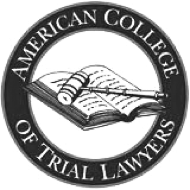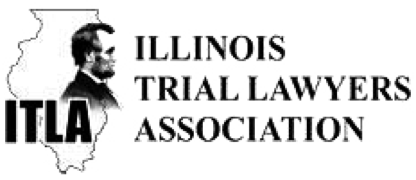January 3, 2024 ·
Republished from Trial Journal of the Illinois Trial Lawyers Association - Winter 2024 - Volume 26, Number 1 The Lost Chance Doctrine
By Mark R. McKenna and Clint T. Pierce In medical malpractice cases, there are often multiple providers who have committed errors over an extended period of time, leading to a catastrophic result. Defense lawyers often misrepresent to trial judges the law on proximate cause in Illinois and argue that a jury should not be allowed to consider defendants liable for errors early in a course of treatment if the errors did not directly cause the ultimate injury.
In cases where medical errors by different providers occur over many hours or days, defense lawyers argue that a plaintiff cannot establish proximate because a) a defendant’s errors later in the course of care “broke the causal chain” for errors by other defendants early in the course of care, or b) plaintiff cannot prove the mistakes early in the course of care caused the ultimate injury.
Take this birth injury scenario:
-A 36-week pregnant woman goes to the Emergency Room at 10:40 p.m. with headache, shortness of breath, palpitations and protein in her urine. These were signs of preeclampsia, a pregnancy-related condition. However, the defendant hospital’s triage nurse admitted the mother to the ER instead of sending her to the Labor and Delivery Unit for monitoring of both mother and baby—the first deviation from the standard of care.
-The ER physician kept the mother in the ER for hours without contacting the attending obstetrician, and without ordering electronic fetal heart monitoring [EFM]—additional deviations from the standard of care. Eventually the mother’s blood pressure rose to 180/105—abnormally high and a clear sign of severe preeclampsia. The treatment of severe preeclampsia is delivery of the baby. However, the ER physician and a consulting cardiologist chose to send the mother to the hospital’s cardiac catheterization lab instead of the Lab and Delivery Unit, losing an opportunity to monitor the baby and perform a cesarean section.
-A labor and delivery nurse came to the ER to check for fetal heart tones with a Doppler device, but never recorded her findings in the chart and never instituted continuous fetal heart monitoring. The nurse left and never returned to monitor the baby.
-At 7:30 a.m., the defendant attending obstetrician arrived in the Cardiac Catheterization Lab. Using a Doppler device, the obstetrician noted that the baby’s heart rate was normal and in the “130’s.” The obstetrician diagnosed the mother as having severe preeclampsia, and ordered a cesarean section delivery of the baby. When the obstetrician performed the cesarean section at 8:42 a.m., the baby was pulseless, motionless, and suffering from severe hypoxia and acidosis. The baby’s cord blood pH was less than 6.8, and her APGAR scores were 0 for twenty minutes. A neonatologist revived the baby after twenty-five minutes of resuscitation efforts. Neonatologists diagnosed the baby with a severe hypoxic-ischemic brain injury soon after birth.
Since all the defendants failed to ever use a continuous electronic fetal heart monitor, there was no hard evidence regarding when the baby’s heart rate and heart rate patterns showed signs of fetal distress. In the Complaint at Law and in the plaintiff’s Rule 213(f)(3) disclosures, we carefully described how multiple deviations from the standard of care over nine hours—in combination—were a proximate cause of the child’s brain injury.
The trial court denied the defense motions based on a doctrine more important than ever in medical negligence cases—the lost chance doctrine.
Read More May 20, 2020 ·
Republished from Illinois Trial Lawyers Association Journal -- Summer, 2020 Amending Complaints: Before, During and After Trial
By Christopher T. Hurley and Mark R. McKenna The Illinois Civil Practice Act specifically allows a plaintiff to amend a complaint at any time. However, some trial judges have been prohibiting the amendment of complaints just prior to or during trial, and then limiting the evidence presented at trial to the issues set out in the initial complaint. This limitation on the evidence heard by a jury is not based on any Illinois law, and denies plaintiffs the right to a resolution of the case on the merits.
By the time a case gets to trial, after many years of discovery, there is always relevant, material evidence that a jury should consider that was not available when the plaintiff fi led his complaint. Then, when the time comes for the trial court to instruct the jury on the issues they must decide, even more evidence exists—the testimony of lay and opinion witnesses, admissions, concessions obtained through vigorous cross-examination of lay and expert witnesses.
Based on the Illinois Civil Practice Act, and over a hundred years of Illinois law, trial courts must permit plaintiffs to amend their complaints, and present their case to the jury, based on the evidence elicited before and during trial. The role of the trial court must be to ensure that juries decide cases based on the evidence at trial—not statements made many years earlier in a pleading. In situations where discovery and trial have revealed new truths—and new claims—Illinois law protects the plaintiff’s ability to amend her complaint at any time, to conform the pleading to the proofs. By following the law, trial courts will fulfill their role of ensuring juries decide cases based on their merits.
Read More January 1, 2014 ·
Republished from ITLA Trial Journal Practice Tips: Closing Argument in Ryan Hill v. Northwestern Memorial Hospital – A Birth Injury Case
By Christopher T. Hurley As with many cases that get tried, we had our share of problems in Hill v. Northwestern. But sometimes the defense is so focused on the problems with the plaintiff’s case—i.e., causation—that they overlook their own problems.
In this article Chris Hurley explores the strengths and weakness of the case, how he prepared for trial, and his uniquely compelling closing argument, resulting in a verdict for the injured child for more than $14,000,000.
Read More November 1, 2013 ·
Republished from Illinois Bar Journal Wrongful Birth: Plaintiffs Can Recover for Emotional Distress
By Christopher T. Hurley and Mark R. McKenna With the rapid growth of prenatal genetic testing, courts are increasingly faced with complex issues arising from claims of negligent genetic counseling. In its 1987 decision in Siemieniec v. Lutheran General Hospital, the Illinois Supreme Court first recognized parental tort claims for wrongful birth when negligent genetic counseling results in the birth of a disabled child.
Recently in Clark v. Children’s Memorial Hospital, the Illinois Supreme Court clarified that damages available to parents who pursue a wrongful birth claim include both the extraordinary expenses of care for the disabled child until his or her majority, as well as compensation for the parents own emotional distress.
Read More November 1, 2012 ·
Republished from Illinois Bar Journal Child Sexual Abuse by Clergy: Statute of Limitations and Repose Challenges
By Christopher T. Hurley and Mark R. McKenna The 2011 Illinois Appellate Court’s decision in Wisniewski v. Diocese of Belleville holds that a Catholic diocese’s fraudulent concealment of abuse by its priest tolls the statutes of limitation and repose, allowing a now middle-aged victim to collect against the diocese. This continued a trend by the Illinois legislature toward allowing victims of clergy sex abuse access to court.
Previously, many lawyers would have turned away these victims because their claims are based on sexual abuse from the 1960s, 1970s, and 1980s and thus time-barred by statutes of limitation and repose. This article looks at the decision and the law governing clergy abuse litigation.
Read More June 1, 2002 ·
Republished from Law Practice Management Risk Takers: Leaving the Big Firm Life
By Christopher T. Hurley Ten years ago, I left the security and comfort of a large firm job at Baker & McKenzie to start my own plaintiff’s personal injury firm. I was 31 years old, and my wife and I had three kids in diapers and an insignificant amount of capital in the bank.
Having all the amenities of big firm life and a growing family, what compelled me to take a leap of faith and fly solo? There was nothing especially wrong with my practice situation at that time. Rather, I was motivated by visions of my future – and my desire to control it.
Read More October 1, 1994 ·
Republished from Young Lawyers Section Journal Plaintiff Lawyer’s Perspective on Contingency Fees
By Christopher T. Hurley The recent publicity arising out of the McDonald’s coffee case and the airline disaster in Pittsburgh seems to have given new life to opponents of contingency fees for compensating plaintiffs’ lawyers. In fact, YLS Co-Editor Jackson Williams (YLS Editor’s Column; “Is It Time to Rethink Contingency Fees?” CBA Record, Sept. 1994) argued that in certain cases such fees are too high. This argument is particularly popular with the insurance and health care industries.
However, there are a number of sound reasons why contingency fees have been an essential ingredient in our civil justice system for over 100 years. I devote my practice to the representation of injured people, but I spent four years at Baker & McKenzie representing corporate defendants and insurance companies. With that perspective I would like to explain why the contingency fee system is fair and in the best interest of the public.
Read More 





